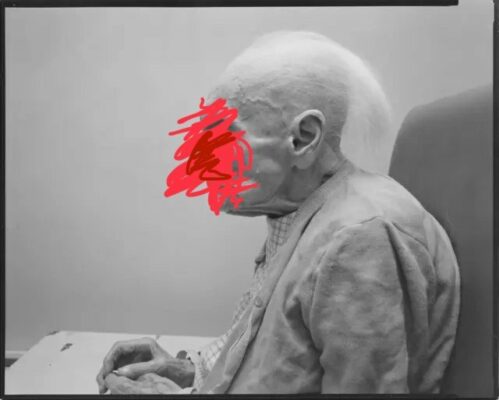Search
To search for an exact match, type the word or phrase you want in quotation marks.
A*DESK has been offering since 2002 contents about criticism and contemporary art. A*DESK has become consolidated thanks to all those who have believed in the project, all those who have followed us, debating, participating and collaborating. Many people have collaborated with A*DESK, and continue to do so. Their efforts, knowledge and belief in the project are what make it grow internationally. At A*DESK we have also generated work for over one hundred professionals in culture, from small collaborations with reviews and classes, to more prolonged and intense collaborations.
At A*DESK we believe in the need for free and universal access to culture and knowledge. We want to carry on being independent, remaining open to more ideas and opinions. If you believe in A*DESK, we need your backing to be able to continue. You can now participate in the project by supporting it. You can choose how much you want to contribute to the project.
You can decide how much you want to bring to the project.

Dressed in my leather jacket, skinny jeans, black boots, and hat—all in black—I set out for Bergman’s Funeral. Tonight, I’m not only meeting my friend Julia, who has been staying with me this September week, but also the woman responsible for my being here: Angélica Lidell. It’s a reunion of sorts with these two Catalan women, in Madrid’s Teatros del Canal’s Sala Roja, where I will watch from the front row as both take the stage. Adding to the drama, a powerful storm is striking Madrid this Thursday, September 19—thunderous, with brief flashes of sunlight fighting through to cast a rainbow in the distance, before the sky finally darkens, setting the perfect atmosphere for Lidell’s play.
Angélica Lidell, the acclaimed writer, dramaturge, actress, and performer (Figueres, Catalonia, 1966), has crafted her own vision of Bergman’s Funeral. After a lifetime of directing that garnered him every conceivable cinematic honor, Swedish filmmaker Ingmar Bergman choreographed his own funeral, which was held after his death on July 30, 2007, in his beloved refuge of Farö. Following the intimate ceremony, a public memorial allowed the Swedish people to pay tribute, much as they had done two years earlier for Pope John Paul II. This connection between the two funerals will resonate throughout the performance, as questions of God—or the absence of one—and divine representation on Earth weave into the narrative. Lidell’s homage to Bergman in this piece is explicit, but echoes of the filmmaker’s influence have been present in her work before, notably in Vudú, where her haunting relationship with Bergman first emerged. This play, however, marks the culmination of that connection, with his funeral at its center.
After a stunning introduction, with music blaring and the stage awash in an intense red, familiar actors from Lidell’s ensemble make their appearance. Then, she emerges. Taking a basin, she symbolically cleanses her genital area, flinging the liquid toward the audience as if it were holy water, and launches into her monologue. She begins by reciting the critiques from the French press with biting irony and a burlesque tone. As for the Spanish press, she doesn’t even bother addressing it—deeming it too insignificant to merit her attention. Like a defiant punk performer, Lidell confronts her devoted audience head-on. The same crowd that purchased tickets now becomes the direct target of her fury, which she unleashes with brutal intensity. Her words, venomous and rapid, carry an unmistakable disdain. What follows is a barrage of accusations—question after question, each more piercing than the last. One, in particular, lingers in my mind: “Did you feel anything?” This moment forces the audience into a cathartic reflection, leaving them both guilty and complicit in the harsh truth she presents. The monologue evokes a spectrum of emotions—guilt, sadness, laughter, sorrow—through which Lidell bares her soul completely, leaving nothing behind. Her words touch on themes that are both deeply personal and universal: a God who remains silent, a nihilistic disillusionment with humanity, and a raw critique of human immorality. These themes resonate powerfully with the central concerns of Bergman’s cinema and life, creating a thread that will run throughout the performance.
Following Lidell’s monologue, a striking choreography unfolds, focusing on the passage of time. Elderly figures dance alongside the young, symbolizing the inevitable aging process. This dance, charged with rawness and sexual immorality, mirrors themes from Bergman’s cinema, presenting a stark, unromanticized view of old age—a contrast to the sentimental lens through which society often views the elderly. Lidell highlights her own anxieties: the fear of fading youth, the decay of the body, and, most poignantly, the fear not just of death, but of the vulnerability that comes with aging. This concern about her legacy is woven throughout the performance, reflected in her response to criticism and embodied in the choreography, where the loss of vitality and the relentless march of time are laid bare. Ultimately, this mounting tension culminates in Lidell spinning uncontrollably until, after much suffering, she is carried offstage on a stretcher.
While Bergman’s influence permeates the entire performance, it is in the final act that this hauntological connection becomes most explicit. Lidell introduces lines from Bergman’s work, delivered by two young Swedish actors, before recreating the funeral held for him in Farö. At this point, the pace slows significantly, allowing the audience—still reeling from the intensity of the earlier scenes—a moment to breathe. Yet this deceleration lingers too long, creating a sense of drag from which the play struggles to recover. The absence of Lidell’s commanding stage presence in this section amplifies this lull, leaving the audience with a palpable void. Nevertheless, the closing moments regain emotional weight. After the reenactment of Bergman’s funeral, Lidell’s intimate conversation with the simple wooden coffin resonates with undeniable poignancy. It becomes a haunting declaration of love that transcends the boundary between life and death—a mountain too steep to surmount, yet still profoundly felt.
Despite its peaks and valleys, Lidell succeeds in channeling Bergman’s spirit, paying him a profound homage. The passage of time, nihilistic despair, and disillusionment with humanity—central themes in Bergman’s work—form the foundation of the play, all while maintaining Lidell’s signature abrasiveness, rawness, explicitness, and surrealism. In the end, this production stands as yet another triumph in Lidell’s growing repertoire, as her work continues to gain recognition and appreciation in her homeland.
[Featured Image: Promotional photograph “Dämon. Bergman’s funeral”, Los Teatros del Canal, Madrid].

Gerard Zamora (Sant Cugat del Vallés, 2001) holds a degree in Art History with a mention in Artistic Heritage Management (UAB), and a master’s degree in Contemporary Art History and Visual Culture (UAM, UCM, MNCARS). His research has been based on the exploration of the contemporary artistic fabric of Barcelona and Madrid. He has also participated as curator in exhibitions such as “Entre lo íntimo y lo exterior” (Galería Nueva) and “Sobre la mesa: Semióticas de la cocina” (Biblioteca MNCARS); and collaborates in publications such as A*Desk Critical Thinking.
"A desk is a dangerous place from which to watch the world" (John Le Carré)